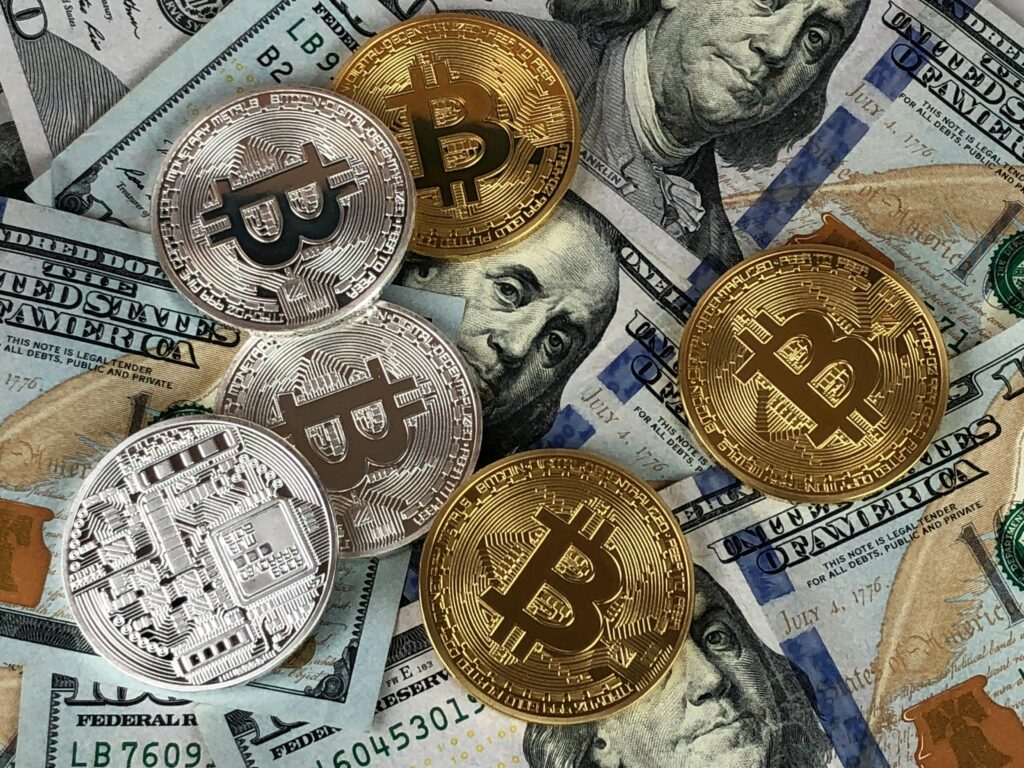
Bitcoin’s market cap: approximately $2.36 trillion—around 62.5% of the total crypto market, which stands at roughly $3.78 trillion .Leading the crypto sector, BTC’s dominance is near 64%—levels not seen since early 2021 .That places Bitcoin as one of the world’s most valuable assets. Analogies from analysts compare it to major tech companies—almost on par with Apple or Google .—📈 Bitcoin in the Broader Global ContextBy early July 2025, Bitcoin’s all-time high was about $122,571, setting its market cap close to a staggering $2.4 trillion .In comparison:Gold reserves are valued around $18 trillion, making BTC about 7.6–11% of gold’s market size .Global wealth totals around $455 trillion, so Bitcoin represents approximately 0.5–0.6% of the world’s wealth .—🏦 Institutional & Sovereign AdoptionInstitutions are piling in:Spot Bitcoin ETFs (e.g., in the U.S. and Hong Kong) have attracted tens of billions in capital that buoy BTC’s price .Corporate treasuries (MicroStrategy, Tesla, Trump Media) now hold large Bitcoin amounts .State actors are emerging in the market:The U.S. government holds ~207,000 BTC via seized assets and formed a federal “strategic Bitcoin reserve” .China, the UK, Ukraine, El Salvador, Bhutan, and others also have substantial official BTC holdings .—⚖️ Valuation Metrics & ComparisonsRealized market cap (cost of all coins when last moved): ~$850 billion, suggesting massive cumulative investment .Price-to-asset comparisons:Some analysts estimate BTC could reach $4.7 million per coin if it absorbed the entire global M2 money supply (~$100 trillion) —a purely theoretical scenario.Another model places the practical ceiling closer to $19 million per BTC, matching total global household wealth (~$418 trillion) .—📊 Bitcoin’s Role in Traditional FinanceBTC is now behaving more like a traditional asset—not just a speculative crypto:Correlations with equities like the Nasdaq 100 and S&P 500 have soared, with rolling correlations reaching 0.87 in 2024 .It’s increasingly seen as both “digital gold” (hedge asset) and a growth asset (similar to tech stocks) .—⚙️ Underlying Fundamentals1. Fixed Supply & ScarcityCapped at 21 million BTC, with about 19.9 million currently circulating .The 2024 “halving” reduced mining rewards, strengthening its deflationary nature .2. Network UsageApproximately 437,000 daily transactions, with thousands of ATMs globally (~38,600) .Serves as a globally accepted store-of-value and cross-border payment method .3. Energy ConsiderationsBitcoin’s proof-of-work system consumes ~121 TWh/year, comparable to Argentina’s electricity use .—🚀 Growth Drivers & RisksKey Catalysts:Institutional inflows via ETFs, funds, and major corporations.Regulatory progress: e.g., U.S. “crypto week” bills, and global central bank interest .Macro-economic dynamics: inflation concerns, weakening fiat currencies, and geopolitical instability.On-chain accumulation: decreasing supply on exchanges indicates long-term holding trend.Main Risks:Regulatory backlash or prohibitive crypto policies.Volatility spikes, which could scare institutional investors.Energy/public image concerns—along with potential displacement by CBDCs or stablecoins.—🧭 Outlook & Long-Term Value EstimationShort-term models suggest BTC could continue rising if momentum persists, potentially reaching $125–$140 k.Long-term fundamentals depend on:1. Institutional adoption and integration into portfolios.2. Legislative clarity and government adoption (e.g. by central banks).3. Evolution as a global digital reserve asset—analogous to gold, with trillions in valuation potential.—✅ Summary: Bitcoin’s Global ValueBitcoin today is:A $2.3–2.4 trillion asset—more valuable than many major companies and national reserves.Eclipsing much of the crypto ecosystem (~62–64% dominance).Expanding beyond speculation into a macro financial instrument with increasing institutional and governmental roles.Still early in its journey: converting even a fraction of global money, gold, or institutional portfolios could elevate BTC’s valuation by multiples over time.Yet it’ll need continued regulatory support, energy solutions, and stable macro environments to fulfill that potential.


